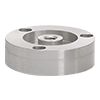-
 Australia
Australia
-
 Austria
Austria
-
 Belgium
Belgium
-
 Bosnia and Herzegovina
Bosnia and Herzegovina
-
 Brazil
Brazil
-
 Bulgaria
Bulgaria
-
 Canada
Canada
-
 China
China
-
 Croatia
Croatia
-
 Czech Republic
Czech Republic
-
 Denmark
Denmark
-
 Ecuador
Ecuador
-
 Finland
Finland
-
 France
France
-
 Germany
Germany
-
 Great Britain
Great Britain
-
 Greece
Greece
-
 Hong Kong
Hong Kong
-
 Hungary
Hungary
-
 India
India
-
 Indonesia
Indonesia
-
 International
International
-
 Iran
Iran
-
 Israel
Israel
-
 Italy
Italy
-
 Japan
Japan
-
 Liechtenstein
Liechtenstein
-
 Luxembourg
Luxembourg
-
 Malaysia
Malaysia
-
 Malta
Malta
-
 Mexico
Mexico
-
 Montenegro
Montenegro
-
 Netherlands
Netherlands
-
 North Macedonia
North Macedonia
-
 Norway
Norway
-
 Philippines
Philippines
-
 Poland
Poland
-
 Portugal
Portugal
-
 Republic of Singapore
Republic of Singapore
-
 Romania
Romania
-
 Serbia
Serbia
-
 Slovakia
Slovakia
-
 Slovenia
Slovenia
-
 South Africa
South Africa
-
 South Korea
South Korea
-
 Spain
Spain
-
 Sweden
Sweden
-
 Switzerland
Switzerland
-
 Taiwan
Taiwan
-
 Thailand
Thailand
-
 Turkey
Turkey
-
 USA
USA
-
 Vietnam
Vietnam
9236 Multichannel amplifier for strain gauge sensors
Operates with up to 4 measuring channels, simple configuration using DIP switch, protected against reverse connection and short-circuit, high degree of protection up to IP67, also available as circuit board without housing
Too many products selected
Please notice that there is a limit of 5 products for the product comparison.
Your latest selection was canceled.
×-
Features
- Operates with up to 4 measuring channels
- Voltage output 0 to ± 5 V / 0 to ±10 V
- Protected against reverse connection and short-circuit
- Also available as circuit board without housing
- Simple configuration using DIP switch
- High degree of protection up to IP67
-
Product data
Model 9236 Measurement error 0.1 % F.S. Type of sensor Strain gauge Interfaces At screw terminal Sensor excitation 2.5 V Protection class IP20 / IP67 Supply voltage 15 ... 30 VDC Measurement channels 2-4 Specific characteristics - Voltage output 0 to ± 5 V / 0 to ±10 V
- Protected against reverse connection and short-circuit
- Also available as circuit board without housing
- Simple configuration using DIP switch
- High degree of protection up to IP67
-
Description
Situations often occur in practice in which it is necessary to place a measuring amplifier immediately in the neighborhood of the sensor in order to be able to access a standard signal there. In this way, long distances to the evaluating electronics can be covered.
This task can ideally be performed by the 9236 in-line measuring amplifier. With its high degree of protection (IP67) its singlechannel version can be integrated into the application even in the tough environment outside the switch gear cabinet.
In the multichannel version, up to four measuring channels can be implemented in one housing for the DIN carrier rail. This means that it can be located either in the switch gear cabinet, or in the immediate neighborhood of the sensor.
Users who want to put the amplifier onto an existing circuit board or who wish to construct their own housing can also obtain the amplifier as an open circuit board. It can be integrated by means of screw terminals.
The 9236 measuring amplifier finds applications wherever the output signal from sensors based on wire strain gages, such as force, pressure or torque sensors, must be converted into a voltage signal, e.g.
- Automatic production machinery
- Laboratory measurements
- Integration into customer‘s circuit boards
- Field measurements
The measuring amplifier itself is powered by voltages between 15 V and 30 V. Internally, the highly accurate, short-circuit protected sensor excitation voltage is generated and used to supply the sensor‘s measuring bridge. The input range of the amplifier is appropriate for sensitivities between 0.5 and 30 mV/V and is also suitable for semiconductor strain gages.
The analog output voltage can be set to a range from 0 to ± 5 V or 0 to ± 10 V. DIP switches are used to set the input range. Fine adjustments and zero point setting are performed by means of multi-turn potentiometers that are mounted on the circuit board. The sensors are connected, and the auxiliary power supplied, through user-friendly screw terminals.
The amplifier in the IP67 version can, if in fact necessary, be achieved by clamping, gluing, or with the aid of a cable tie. The open circuit board has mounting holes for easy assembly. The amplifier‘s limit frequency is 1 kHz. -
Data Sheet & Downloads
-
Accessories
Related products
Germany

burster praezisionsmesstechnik gmbh & co kg
Talstr. 1-5
76593 Gernsbach
Germany
Fon: +49 7224645-0
Fax: +49 7224645-88
infoburster.com
www.burster.com
Trade fairs
The Battery Show
18.06. -
20.06.24 -
Stuttgart,
70269,
Deutschland
burster gmbh & co kg
sensors & precision measurement
Talstr. 1-5
76593 Gernsbach
GERMANY
Contact:
Phone: (+49) 07224-6450
Fax: (+49) 07224-64588
E-Mail:
infoburster.de
The measurement solution.
It‘s with this ambition and for over half a century burster, a global player in the precision measurement technology industry, supplies some of the world’s most recognizable brands with sensors, precision measuring devices and measuring systems for sensor signaling processing. This is all done through our research, development and production headquarters in Germany.
Where quality assurance and production control play a significant role, burster is on board.







